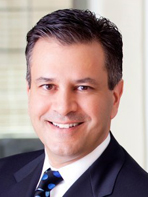BLOG: Telemedicine — its time has arrived

Note: This is the first in a series of blog posts addressing the immediate needs of practices given the COVID-19 situation.
BLOG: Seven questions to ask when considering private equity
I’m heading East to participate in the Healio event “Open Your Eyes to Private Equity” as a panelist tomorrow afternoon just ahead of the OSN New York meeting.
BLOG: What I learned at AAO — the good stuff and my concerns
If my math is correct, this was my 33rd American Academy of Ophthalmology meeting. Each annual meeting brings more perspective to this incredible medical specialty many of us call home.
BLOG: One simple formula on change
Back in my college days at Michigan — Go Blue! — I had the fortune to be a Dannemiller intern, part of a small group of students who were mentored by Kathie Dannemiller, a dynamic consultant who is regarded as the “godmother of organizational development.”
BLOG: Disrupting your surgical referrals
One concern shared with me by eye surgeons is what would happen to surgical volume if referral sources are pulled away. That threat may still be far off in the distance, depending on M&A activity and consolidation in optometry (see my blog “Big money enters eye care” for details). But reading an article in The New York Times brought another potential disruptor to light: U.S. citizens traveling abroad for surgery. Now before you dismiss this since you have known for years that some people will travel (eg, to Canada or Mexico for LASIK, ironically able to get more advanced technology than what the FDA has allowed here), pay attention to the main thrust of this article.
BLOG: Encourage patients to complain
Compared with business leaders, doctors are in a difficult spot when it comes to how success is measured. In business, making the right decision at least part of the time can lead to a profitable enterprise. If you’re right more than half the time, you’re often considered a Bill Gates type of genius. But if you’re a doctor, you can lose your license by being right only half the time. Clinically and surgically speaking, that’s poor medicine. This partly explains why doctors tend to be risk-averse and conservative in decision making.
BLOG: The half-life of a complaint
Let’s recap: In recent blogs, I’ve touched on different elements that impact the value of the medical practice, with a tilt toward the items that are more difficult to measure financially such as customer experience.
BLOG: Big money enters eye care
The announcement several weeks ago of Goldman Sachs’ purchase of Capital Vision Services (MyEyeDr) marks a significant milestone in private equity’s involvement in the ophthalmic industry. While most of you reading this have been focused on ophthalmology deals and the rich valuations (relative to the traditional buy/sell patterns), there has been activity brewing – albeit more slowly and quietly – on the optometric side that dates back to the first MD practice deals (for example, Katzen Eye, Koch Eye).
BLOG: Your fees and the value of your practice
Given the frenzy over private equity that’s emerged over the past several years, many practices are at least considering a sale. One of the first questions asked is around figuring out how much the practice is worth. The answers to this are complex and involve more than calculating the free cash flow (normalized EBITDA) of the enterprise. Once that number is determined, the next question is, “How can we improve it?” as the math of PE becomes crystal clear. Every extra dollar of profit can mean anywhere from 4 dollars to 10 dollars of value in a transaction.
BLOG: How good are you really?
Most of us think we are better than we really are. Sad but true. It shows up all across society, and psychologists even have a term for it: illusory superiority, aka the above-average effect. OK, so we are a bit biased when it comes to ourselves. I’m sure I suffer from it just like everybody else.
Read more about

